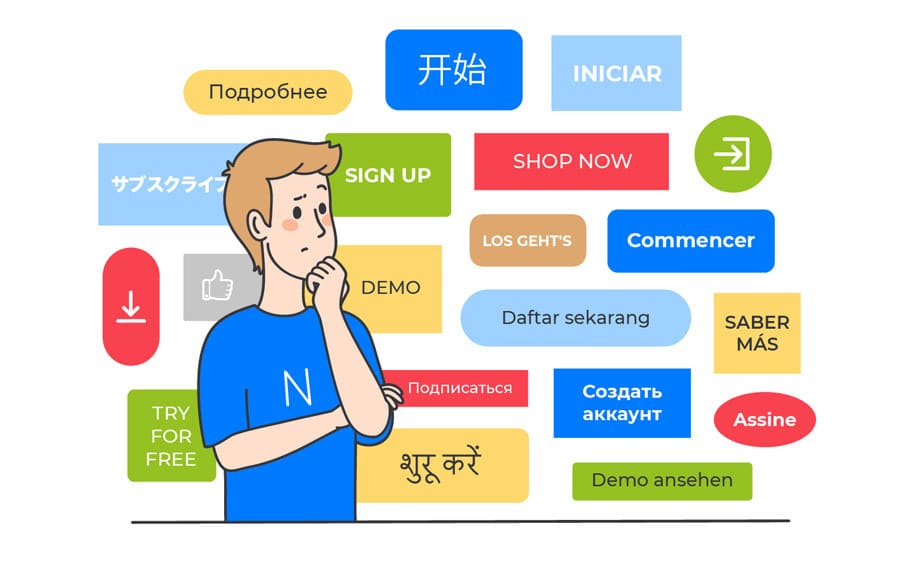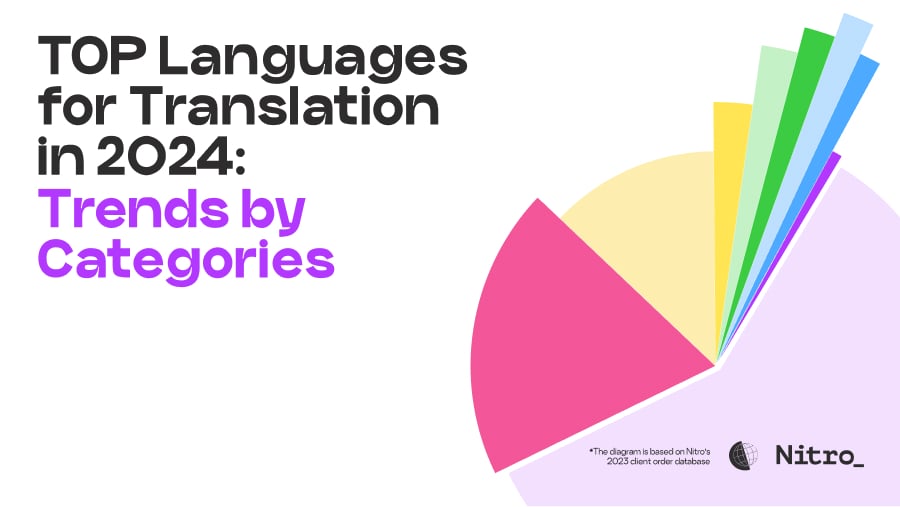Alconost states that it provides localization into 100 languages and that they work only with native-speaking professional translators. It sounds great, but how do you do it? For example, if you need to localize an interface from English to Burmese, Hindi, Odia, Lao or Dzongkha, where do you find the right people, how do you check the quality of their work, and how do you retain them for regular collaboration?

We spoke to Anastasiya Yazepenka, who is responsible for finding and testing translators at Alconost, about the unique aspects of hiring rare language translators. This is mainly required for localizing apps, games and online services, technical documentation and marketing materials for IT companies.
1. What are rare languages in localization?
2. The process of finding a translator: 6 steps
3. How to find rare language translators
4. How much does a rare language translation cost and what affects the price
5. How to communicate with translators
6. Four ways to avoid selecting the wrong candidate
7. Testing translators
8. Interactive onboarding
9. Why all this isn't a secret
1. What are rare languages in localization?
Anastasiya, let's first clarify which languages are considered 'rare' in our context.
Yes, let's clarify this from the start. Of course, classifying a language as rare depends on certain things. In one way or another, all the languages that we work with are living languages, which are widely used in a particular region, with relatively large communities using them on a daily basis. For example, Kannada is the native language of over 40 million people in South-West India, but we classify it as a rare language.
In terms of localization, we consider a language rare if it is not in constant demand on the market, both among our clients and overall. The lack of consistent demand means the supply, i.e. the number of translators working in this language, is also limited. When there is demand for this language, the suppliers, i.e. the translators, are in a more favorable position than the customers. Consequently, clients are more likely to compete with each other for a good rare language translator than translators compete for a client.
There is no shortage of translators who are native speakers of Spanish, German, French, Chinese or Japanese. Nevertheless, even in these popular languages, it may be hard to find a language specialist to translate highly specialized projects, such as medical equipment software. It may be hard to find suppliers who are experienced and responsible, and available for collaboration, even in the popular language pairs. In any case, when translators are competing with each other for a client, it creates a certain balance of power. Translators understand that the client will choose them based on their competitiveness: ability to keep to a deadline, readiness to negotiate the price, and the ability to translate accurately. Of course, if a translator is experienced in using specialized computer-assisted translation tools (CAT tools or platforms), is easy to talk to and discuss the project details, that is also a big plus.
When clients compete for suppliers, it creates a different power balance. If we receive only a few replies, or even none, to our advertisement or we see very few available translators, it means that this target language is in less demand, so we can call it a rare language for localization purposes.
I'd like to ask then how quickly you find rare language translators? It can obviously vary…
Yes, it's always very individual. From what I can remember, the shortest amount of time was five working days, and the longest was more than three months (however, in that instance, we needed a pool of several suppliers, who were competent in a certain field). Ignoring the extremes, I would say that we can find an exotic language translator in about three weeks on average.
Want to learn more about how quickly we are able to
find a rare language translator for your project?
Book a free call with our team!
By the way, when we're talking about "finding a translator", we mean selecting appropriate candidates by sifting through applications and studying their resumes, right?
Oh, not only that! Studying the resume is just the start, the real work comes next. Let me describe all the stages included in "finding a translator" at Alconost, step by step.
2. The process of finding a translator: 6 steps
Step 1. Manually searching for potential suppliers: using selection criteria and examining relevant profiles. As an option, we may publish an advertisement on specialized platforms and study the profiles of translators who respond.
Step 2. Contact: inviting a translator to collaborate via a private message or email.
Step 3. Negotiation: requesting additional information from a candidate about their qualifications, discussing rates and payment methods.
Step 4. Test task: providing a test task and reviewing the results after a couple of days.
Step 5. Validation: examining any errors the candidate made when completing the test. This is the most interesting, although time-consuming step, where every comma can affect the outcome. This stage has three possible outcomes. If the test is an obvious fail, we inform the supplier of this but do not go any further. If the test is an obvious pass, we move on to the onboarding. The most interesting are borderline passes, for example, when the result is technically a fail, but the reviewer believes the translator did a good job. The decision is made on a case-by-case basis in these instances, based on how serious the errors were and ways of minimizing these errors in the future.
Step 6. Onboarding: this is probably the most predictable stage for us, but the most unusual stage for the supplier, who is not yet familiar with Alconost's processes, standards and corporate culture. During this stage, we introduce the translator to our workflow and deal with administrative tasks, such as adding the translator to our contractor database, and signing an agreement that includes the NDA. We are not big fans of bureaucratic procedures ourselves, but we know how sensitive clients can be to these nuances, so we deal with them from the start.
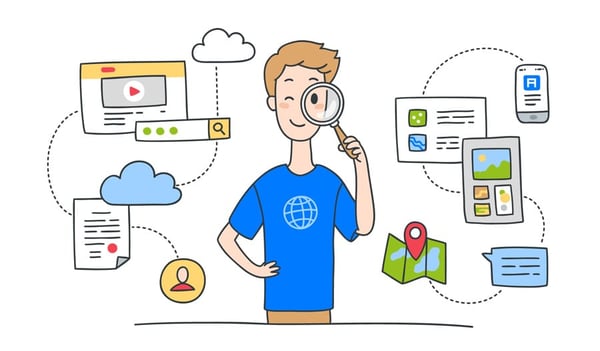
Only after all six steps have been completed, can we say that we have found a rare language translator. Actually, it would be more accurate to say that it takes an average of three weeks not to search for a translator, but to find one: it's a subtle but important difference in this case.
True, looking at profiles is only the tip of the iceberg. What is the trigger that launches this entire process?
The trigger is always a request from the client for a particular language pair. The language pair is what we call the source and target languages. This is how it works: when localization managers receive a request from a client for translation into a language we haven't worked with before, they create a task in our internal system. The task to find translators is created using a template that we have refined over the years of recruiting. The template contains only 11 questions but they're all important ones.
Answers to these questions give us an overall idea of the task that the translator will need to complete and suggest certain requirements that the translator needs to meet. Basically, answers to these questions form the work specifications for the vendor managers.
So you look for rare language translators only upon the client's request?
When we're going through the database, we might notice that we don't have enough active translators for a particular language pair, while we have plenty of specialists in another language pair but no one working in a particular high-demand niche. But these observations don't trigger a search. It doesn't make sense to collect translators just to add them to the database, since inactive contacts fade over time. If you don't provide translators with regular work, they tend to forget your standards and criteria, but remember the long-winded process (emails, test translation, onboarding) which, ultimately, led nowhere. Therefore, only a specific task triggers a search for translators.
Do you find translators for any volume of work here at Alconost? Or does it have to be a large project to start looking?
If the potential project is over 1,000 words, we start looking. Which isn't to say that small projects don't stand a chance. If we're talking about a constant stream of small projects, that's even better for us than a large, but once-off translation project. As I've said before, we're interested in regular collaboration with the translator. It's important not to let the company and translator relationship fall dormant. So, if the client needs translation into a rare language and the volume is quite small but these jobs are recurrent, we're on board!
By the way, it's not a problem for us if the client views us as an additional or secondary vendor. For example, if the client already localizes their product into most languages themselves or with the help of another vendor, and contacts us only for a particular need. We're happy to help with translating only rare languages, for example, or with quality assurance of already existing language versions of a product, and we can embed ourselves into a client's existing localization set-up.

3. How to find rare language translators
How do you and your colleagues usually find translators?
There are a number of online platforms that we use in our search. Unfortunately, I can't mention them by name, but I can say that there isn't a single resource out there to cover all our needs for qualified translators.
All platforms where we find suppliers have their own pros and cons. Some platforms, for example, have a lot of rare language translators in particular, but not everyone lists their contact details, which complicates communication. Other platforms may have many excellent specialists, but only in one language pair or for only one particular topic. For example, only translators into Japanese or only translators with software development experience.
A translator with software development experience? Sounds like a rare combination!
Of course, not all developers have a linguistic background. But there are projects where knowledge of niche terminology, localization experience in a highly specialized topic, and familiarity with the topic overall, are more important than a translation degree. Here we have another problem: rates that would motivate a programmer with experience in localization to work in localization rather than programming.
What about platforms like LinkedIn? Do you find translators there?
Sometimes, but we have to look through a lot of profiles that might not be complete, and in some cases, there are significant delays in potential suppliers responding to our queries. LinkedIn is good but it isn't our main source of suppliers.
Can you remember the most unusual source of an excellent translator?
The most unusual case in my practice was when a potential translator into Canadian French recommended their colleague as he himself was working on urgent projects. We contacted the specialist recommended to us, he was interested in the job, successfully completed the test task and onboarding, and is now part of the Alconost translator team.

4. How much does a rare language translation cost and what affects the price
So, what about pricing? Is there a correlation between "the more popular the language, the cheaper the localization"?
That statement is only partially true. If we're talking about translation into popular localization languages, the price is mainly influenced by the living standards of countries where the native speakers live. For example, translations from English to Hebrew, Norwegian, Dutch or Japanese will cost more than, for example, localization from English to Turkish, Hindi or Indonesian.
Of course, a shortage of qualified translators in a particular language pair will significantly affect the price. For example, the cost of translation from English to Khmer (which is spoken in Cambodia) or Burmese (spoken in Myanmar) will be about the same as translating to Swedish or even Norwegian. All because these translators know that they are in high demand, so they avoid reducing their rates or negotiating prices in general.
Another factor is the translator's competence in a specialized topic. Such as translators with experience in development, as I've mentioned before. The problem is that these suppliers will expect translation rates that are close to the prices charged by programmers. But programming rates are higher than the average translation rates. It's the same situation with other topics in which only a handful of translators specialize.
So, even if the language itself is popular and relatively cheap to translate into on the whole, the rates may skyrocket for high-quality work in a very specialized field. A translation of the same size and into the same language may cost very differently, depending on whether it is an article on consumer behavior or instructions for a woodworking machine.
Want to learn more about rare language localization pricing? Book a free call with our team!
5. How to communicate with translators
Let's talk about establishing contact and how you communicate with candidates. What do you normally write to the translators and what do you pay attention to in their responses? Any specific advice about communication?
If I was the one who found the candidate, I usually briefly describe the company and project for which I need a translator, in the first email.
If the candidate responded to my ad, I study their profile and CV, and then write a short email to discuss conditions if I'm happy with what I've seen. I often ask clarifying questions regarding experience, specializations and their role in specific translation projects.
Do you communicate with translators over email or in messengers?
Here at Alconost, we prefer email. This ensures colleagues can see everything, there is a record of the correspondence, which is easy to search through. Some translators would prefer to communicate using messengers. I've noticed that translators of African languages prefer WhatsApp, while speakers of Asian languages prefer Skype. But we leave messengers only for extreme cases and emergencies. For example, if our emails aren't reaching the translator, we find out the reason via messenger and then return to email.
6. Four ways to avoid selecting the wrong candidate
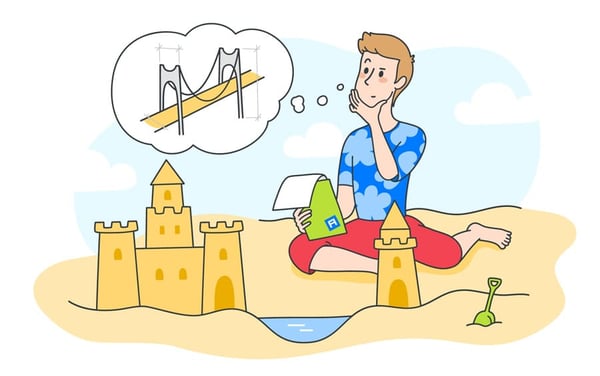 When we study a resume, we always take note of how many languages, dialects and fields a translator works in. Let's take two fictional resumes as an example. First resume: a niche specialist, who works with one language and a maximum of two dialects, and specializes in certain fields. Second resume: a 'universal' translator, who claims to know several languages and dialects at the native level and states that they're competent in a dozen fields, from translating poetry to software localization for heavy industry. The owner of the first resume definitely has a higher chance of reaching the next stage in Alconost's recruitment process than the owner of the second.
When we study a resume, we always take note of how many languages, dialects and fields a translator works in. Let's take two fictional resumes as an example. First resume: a niche specialist, who works with one language and a maximum of two dialects, and specializes in certain fields. Second resume: a 'universal' translator, who claims to know several languages and dialects at the native level and states that they're competent in a dozen fields, from translating poetry to software localization for heavy industry. The owner of the first resume definitely has a higher chance of reaching the next stage in Alconost's recruitment process than the owner of the second.
Mentioning world-renowned brands as clients can also backfire. This can mean that it's the resume of a scammer: for example, this article even lists famous companies used by unscrupulous people to try and pass themselves off as in-demand, qualified professionals.
Less obvious red flags in a resume are online language courses. Of course, we won't automatically reject a specialist who includes them in their resume, but we'll check the candidate more thoroughly. I'll explain why. Online language courses often provide lots of useful information that can show a translator which areas to focus on, which resources and tools to use. But these courses can't compare to the fundamental linguistic training provided by good old universities, and certainly not to many years of real-world experience. Perhaps other recruiters think differently, but here at Alconost, we're not very impressed by certificates from online language schools.
The most concerning thing is when a candidate provides contradictory information about themselves. For example, one candidate claimed to be a freelancer but then used "we" when writing about himself. As it later turned out, this candidate wasn't a translator, but a representative of a translation agency. The problem here wasn't that he was an agency employee, but that he tried to hide this fact and was being disingenuous.

7. Testing translators
Do you test all potential translators or are there exceptions?
Everyone who reaches the testing stage.
What do you use to test the real translating ability?
We check translating qualifications using a fragment of the project for which we need the translator. We negotiate with the client which fragment of the project can be used for testing. It is usually 250-300 words long. This amount won't take too much of the translator's time but it is long enough for the candidate to show their skills. What's important is that a translation of this fragment not be already available anywhere online. Since this is only the test translation and the translator hasn't yet completed the onboarding, which includes signing the NDA, we try to choose a text fragment that doesn't make it obvious which product it's referring to.
Which criteria do you use for assessment and who checks the test task?
We check the test translation using a specialized quality assurance system. If we already have a translator for this rare language, whom we're currently working with (this happens if we work with this language, but we need to expand the translator pool), then our regular translator checks the quality of the candidate's work. If we don't have a regular translator, candidates check each other, while another candidate can serve as the arbitrator in case of disagreements.
Translation quality is measured as a percentage in the QA system, so perfect quality is 100%. The candidate is considered to have passed the test if the test quality is 98% or higher. The quality index is calculated automatically, based on how serious the errors are. Error severity is decided by the reviewer, but we make sure that they don't over- or underpenalize.
We also often ask the reviewer to provide their overall impression of the test translation. In my practice, I remember one instance when the candidate made several critical, but repetitive errors, which were related to the specific terminology in this project. The reviewer was already working on the project and knew the terminology, while the candidate hadn't and didn't know the terms, but the reviewer couldn't approve a test containing errors. But it was obvious that if the translator learned the right terms, they could provide an excellent result. Which is what ended up happening.
Plus, a quality score of 98%, which we consider the pass level, is a pretty high requirement. As far as I know, some translation agencies accept tests with a score of 95%.
What if a candidate disagrees with the reviewer?
We always ask candidates, even those who successfully passed the test, to carefully study the test results, note the errors, and reply to the reviewer's comments. It is a constructive process when searching for translators into popular languages, but less so with rare languages. There can be emotional and prolonged arguments, and we have to soothe participants and ask them not to take the reviewer's comments personally. Vendor managers have to act as mediators to preserve a constructive atmosphere between candidates and help them listen to each other.
Want to learn more about localization quality assurance at Alconost? Book a free call with our team!
8. Interactive onboarding
You've spoken about all stages of the search except the last one — onboarding. Is it a topic that can be discussed publicly? There's probably corporate know-how involved…
My colleagues and I try to ensure that the onboarding process doesn't turn into a stream of boring instructions. Right now, onboarding is a series of tutorials set out on Google forms and Trello cards, and a few instructional emails, which are sent to the translator at certain onboarding stages. We believe that thanks to the portioned provision of information, the translator develops a better understanding of our processes.
More specifically, we provide more information about our translation quality standards and communication during onboarding, as well as presenting our attitude to the work processes and deadlines. While the translator tells us more about themselves. For example, which translation tools they can use, which platforms they usually work in, the operating systems on their PC and smartphone. The last question may sound odd, but we have a reason for it. It can be important if the client requests localization quality testing (LQT) and the translator has to launch the application or game on their device.
The purpose of onboarding is to prepare the translator for working on a real project, so that they understand what is expected of them and what they need to do in a particular situation.
 The process of onboarding only takes a few days, so it can't really change an already formed specialist or make a person acquire some hard skills. But we can suggest some simple things that the translator might not have paid attention to before. We highlight these during onboarding: yes, these are minor details but they are important for us, please keep them in mind.
The process of onboarding only takes a few days, so it can't really change an already formed specialist or make a person acquire some hard skills. But we can suggest some simple things that the translator might not have paid attention to before. We highlight these during onboarding: yes, these are minor details but they are important for us, please keep them in mind.
Returning to the topic of rare languages. Can you list which rare languages Alconost actively works with at present?
Yes, I checked right before our chat. We've already spoken about some of these languages, while others may not be familiar to a large audience, but here is a list of rare languages that we can translate into from English at any moment.
|
Amharic
|
Gujarati
|
Odia
|
|
Basque
|
Icelandic
|
Sinhala
|
|
Bengali
|
Kannada
|
Somali
|
|
Bislama
|
Kinyarwanda
|
Swahili
|
|
Burmese
|
Lao
|
Tagalog
|
|
Catalan
|
Malayalam
|
Welsh
|
|
Cebuano
|
Marathi
|
|
|
Dzongkha
|
Nepali
|
|

I can imagine how much work had to be done behind the scenes to make this possible!
Thank you. This may sound obvious, based on our conversation, but I'd like to stress one thing. Finding translators is a system in Alconost: it's a process rather than an ad hoc scenario. We understand that it is a long game, and that a translator for whom we have no work today could become a vital member of our translator team tomorrow. That's why, even if the amount of work for a translator drops, we try to keep in touch with them, to maintain regular contact.
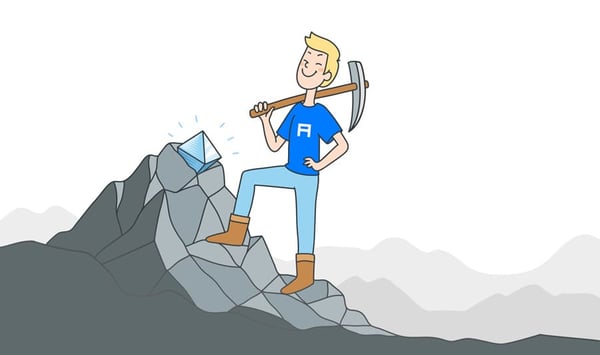
Rare language translators require particular care. After all, if we have a need for this language again, a new search might take even longer if an existing contact remembers us as an agency that wastes time with questions but doesn't provide work.
Maintaining a good relationship is also useful when the search for translators hits a dead end. Then we can ask the translator for a recommendation. It may be that they've worked on another project with a colleague who speaks the very rare language that we're looking for. A localization company must have established ties in the translation community.
9. Why all this isn't a secret
Through our conversation, we've learned a lot of details that not all language service providers would be willing to share, I think. Are you afraid that clients who localize products in-house will copy your processes and turn to your agency less often?
I'm not so sure that our system can be easily copied. Let's take the OKR methodology or Objectives and Key Results. It is described in detail in John Doerr's book, Measure What Matters, there is plenty of information about OKR, and there are special instruments for the practical application of OKR in companies. But not everyone who wishes to implement OKR is successful. It's not just about information access, but about how it is used, as well as whether a company is at a stage where it has a critical need for these changes.
I can't deny that a development company with in-house localization might consider borrowing a page from Alconost. Indeed, why not: Alconost has developed real-world methods of expanding the translator pool, our quality management system is ISO 9001:2015 certified, and we have a lot of positive client feedback. Why not create a similar system? I see two reasons.
First, a development company will most likely have their own process for expanding the translator pool, so it's difficult to start again from scratch. The company will probably integrate our process into their existing one, which will lead to a hybrid system that certainly won't be the same as ours.
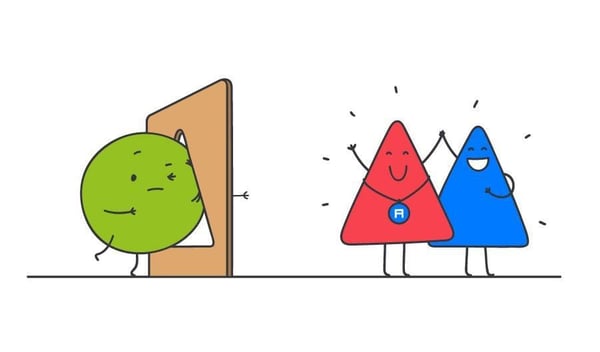 Second, as a localization company that provides services to many different clients, we can provide translators with a variety of work and quite regularly. This strengthens translator loyalty and increases the chance that a translator will agree to accept an urgent project, do a good job, and finish by the deadline. Even a very large development company may not have the translation volumes to provide translators into certain languages with regular work.
Second, as a localization company that provides services to many different clients, we can provide translators with a variety of work and quite regularly. This strengthens translator loyalty and increases the chance that a translator will agree to accept an urgent project, do a good job, and finish by the deadline. Even a very large development company may not have the translation volumes to provide translators into certain languages with regular work.
I've already explained why we don't look for new translators 'just in case'. For the same reason, a development company is unlikely to spend time and money on searching for, testing and onboarding suppliers who will ultimately just hang around.
So, it's less about how difficult it would be to copy our system, but rather about whether it would make sense to copy it.
Want to learn more about localization into rare languages? Book a free call with our team!
Thank you for such an honest and in-depth conversation!
I was glad to share my experience and the company's experience. I'll leave our email address: info@alconost.com. If a rare language translator is reading this article, please know that we're always happy to hear from you.






 When we study a resume, we always take note of how many languages, dialects and fields a translator works in. Let's take two fictional resumes as an example. First resume: a niche specialist, who works with one language and a maximum of two dialects, and specializes in certain fields. Second resume: a 'universal' translator, who claims to know several languages and dialects at the native level and states that they're competent in a dozen fields, from translating poetry to software localization for heavy industry. The owner of the first resume definitely has a higher chance of reaching the next stage in Alconost's recruitment process than the owner of the second.
When we study a resume, we always take note of how many languages, dialects and fields a translator works in. Let's take two fictional resumes as an example. First resume: a niche specialist, who works with one language and a maximum of two dialects, and specializes in certain fields. Second resume: a 'universal' translator, who claims to know several languages and dialects at the native level and states that they're competent in a dozen fields, from translating poetry to software localization for heavy industry. The owner of the first resume definitely has a higher chance of reaching the next stage in Alconost's recruitment process than the owner of the second.  The process of onboarding only takes a few days, so it can't really change an already formed specialist or make a person acquire some hard skills. But we can suggest some simple things that the translator might not have paid attention to before. We highlight these during onboarding: yes, these are minor details but they are important for us, please keep them in mind.
The process of onboarding only takes a few days, so it can't really change an already formed specialist or make a person acquire some hard skills. But we can suggest some simple things that the translator might not have paid attention to before. We highlight these during onboarding: yes, these are minor details but they are important for us, please keep them in mind. 

 Second, as a localization company that provides services to many different clients, we can provide translators with a variety of work and quite regularly. This strengthens translator loyalty and increases the chance that a translator will agree to accept an urgent project, do a good job, and finish by the deadline. Even a very large development company may not have the translation volumes to provide translators into certain languages with regular work.
Second, as a localization company that provides services to many different clients, we can provide translators with a variety of work and quite regularly. This strengthens translator loyalty and increases the chance that a translator will agree to accept an urgent project, do a good job, and finish by the deadline. Even a very large development company may not have the translation volumes to provide translators into certain languages with regular work. 


